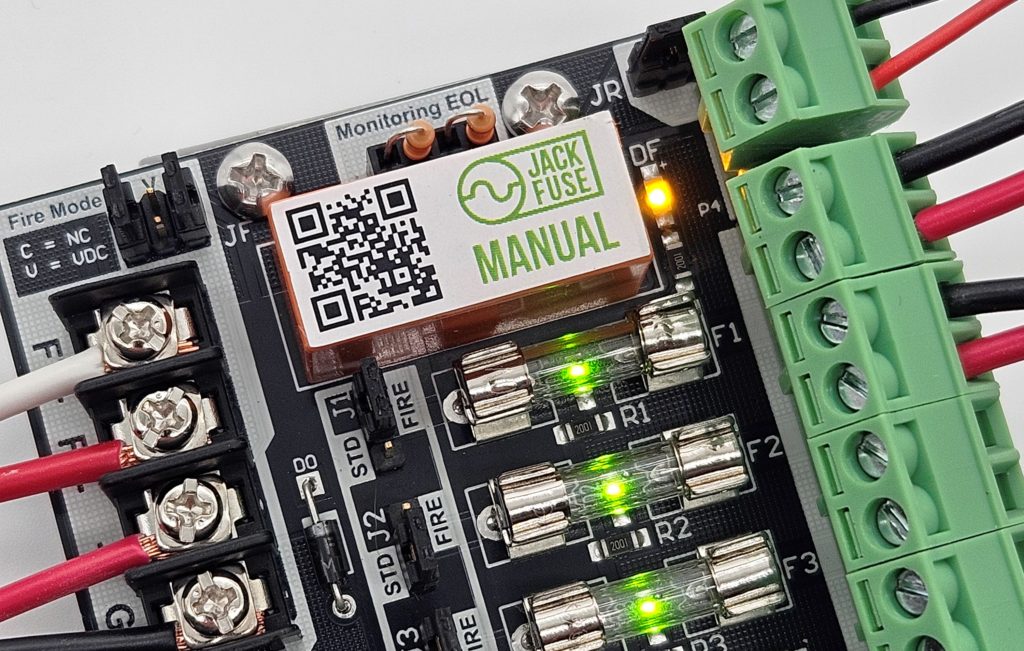The ability to escape a building during a fire alarm event is obviously a vital component of building design that can help ensure occupants’ safety. In Australia there are legislated rules that dictate how this function must be achieved in combination with electronically locked doors.
The rules are laid out in the National Construction Code (NCC) which is freely available online. Despite this, there is still often confusion surrounding how electronic access control systems must operate during a fire alarm. There are also some best practice principles that should be followed.
To paraphrase, the NCC states that a door in the path of a required exit (most doors) must be readily openable without a key. A free handle exit complies with this requirement. In the case of electronically locked doors that do not have a free handle exit option then the door must automatically unlock upon the activation of any sprinkler, smoke or other fire detection system. This function is commonly referred to as a fire trip.
Fire trips for electronic access control systems are implemented using a simple relay interfaced to the building’s fire indication panel. The relay de-activates during a fire alarm and cuts the power feed to any electric locks in an exit path. This requires the locks to be of a failsafe design and allows occupants to escape without needing to swipe a card or press an exit button.
In modern, well-designed electronic access control systems this interface is provided by a dedicated power distribution module with a built-in fire trip interface. These modules are designed to provide an automatic failsafe release for multiple electronic locks at once. They work by using a built-in relay to cut the positive side of the lock power circuit, thus unlocking the door. Often these modules also feature onboard fuses that help protect the lock cabling and power supply.
Another important feature provided by quality power distribution modules is the ability to monitor the fire trip status via an alarm input. This is a critical feature that alerts security staff and building managers when a fire trip has been activated, either by the fire detection system or by a fault such as a damaged cable. Early detection of a fire trip will alert management that their facility may not be secure and allow steps to be taken to ensure the alarm or fault is rectified. This is especially useful for doors that may be unlocked during the day. Without a fire trip alarm, it would not become evident that these doors can’t be secured until the end of business hours, at which time a repair technician may be difficult and expensive to procure.
Fire trip interfaces that interrupt the negative or common side of a lock power circuit are sometimes implemented in an attempt to save equipment costs but should be avoided. There is a risk that the negative side of a lock power cable could become damaged and make contact with a door frame or other metal surface such as a fixing screw. Door frames, wall studs and other metal surfaces are often connected to the building earth which may provide an electrical path back to the negative side of the access control power supply. This has the potential to bypass the fire trip function entirely for all the locks served by that fire trip interface. This fault may not become evident until the worst possible time, in a real fire emergency.
It is important to note that not all electronic access control doors require a fire trip. Doors that provide a permanent free-handle exit comply with the NCC with the added benefit of preventing unauthorised re-entry during a fire alarm.
There is a common misconception that an emergency door release break glass unit can be used in place of a fire trip. This is not the case. The use of break glass units is a good practice and useful for non-fire related emergencies however they do not provide the “readily openable” or fire system interface requirement laid out by the NCC. As a rule, a door featuring a break glass will also require a proper, automatic fire trip.
The correct implementation of fire trips for electronic access control systems is essential but need not be a challenge. Using a purpose-built, monitored, power distribution module combined with regular testing eliminates the guesswork and ensures your system is up to code.

